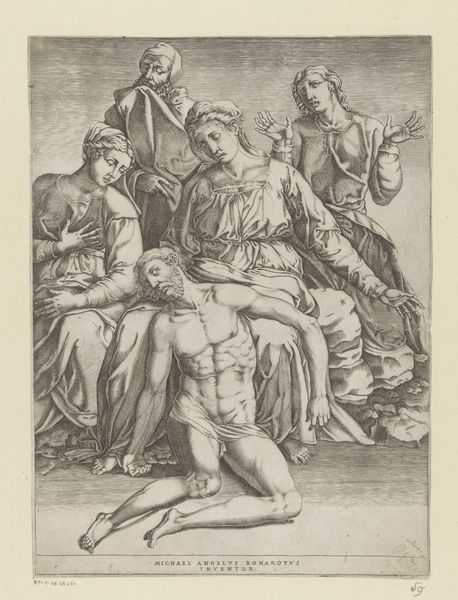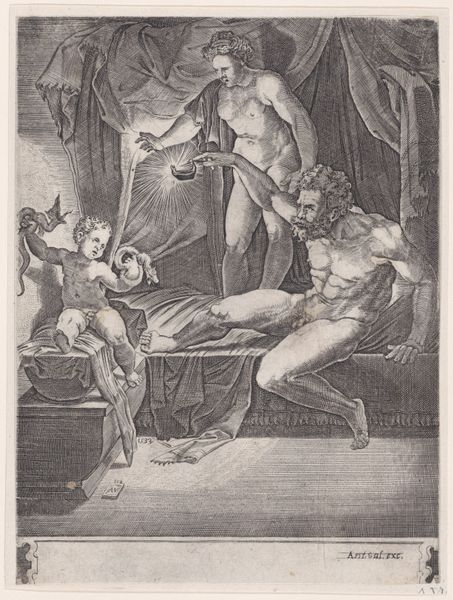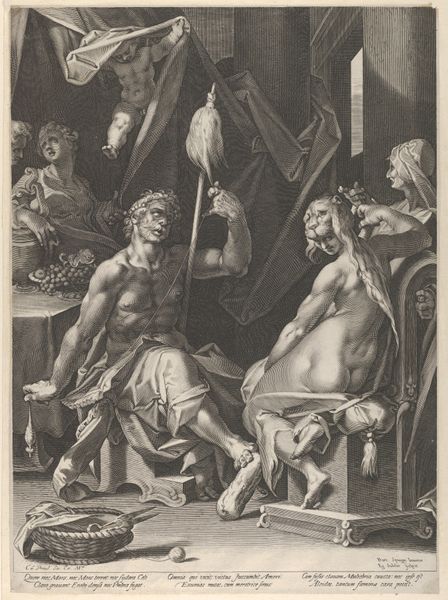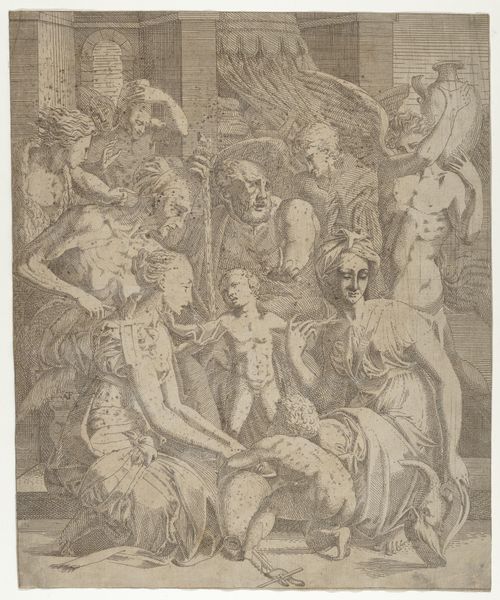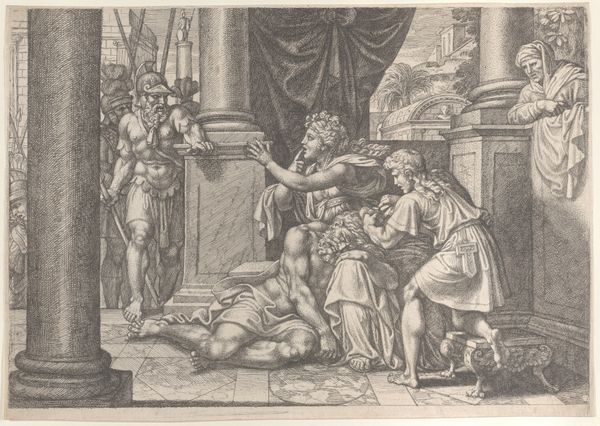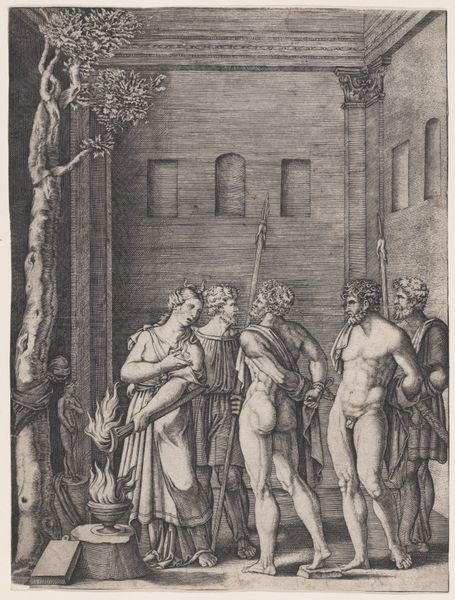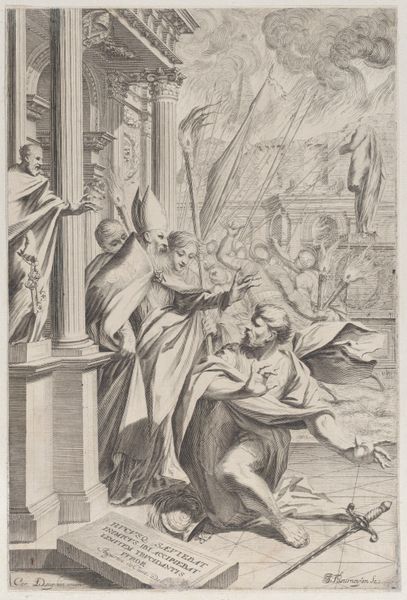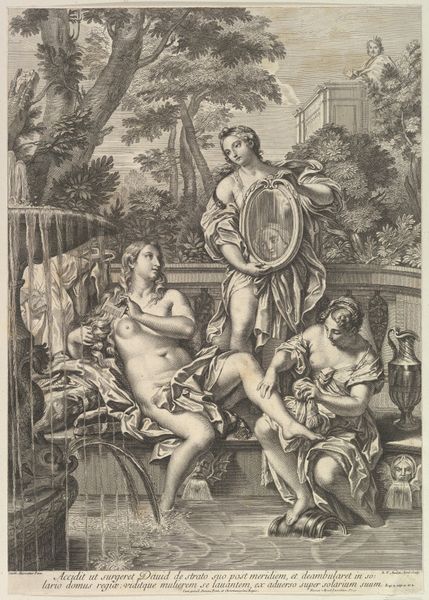
drawing, print, intaglio, ink
#
drawing
#
narrative-art
# print
#
intaglio
#
figuration
#
11_renaissance
#
ink
#
history-painting
#
italian-renaissance
Dimensions: Sheet (trimmed): 11 5/8 × 10 5/16 in. (29.5 × 26.2 cm)
Copyright: Public Domain
Editor: We’re looking at Léon Davent's "Rebecca and Eliezer at the Well," an intaglio print from around 1537 to 1550. It’s densely packed with figures, a real visual feast. The composition and the story it depicts both feel incredibly dynamic. How would you interpret this work within its historical context? Curator: The key to this piece, beyond its immediate visual impact, lies in understanding its function within the print market of the Renaissance. Prints like these were crucial for disseminating visual ideas and artistic styles. Considering the Italian Renaissance influences evident, Davent likely used prints after Italian designs to gain status in the French Court. Have you considered the impact of this particular story selection? Editor: Not really. It's a biblical scene. It illustrates an encounter, so what exactly can it tell us about 16th-century France? Curator: Exactly. What does this story represent in the collective consciousness of the time? It’s not just a love story; it touches on themes of divine providence, finding suitable alliances, and prosperity. Consider that illustrated Bibles were expensive. Prints allowed for wider circulation of these stories. The question of who could access and understand them becomes pertinent. Editor: So it’s a tool for teaching moral values? Curator: And so much more. It also reflects power structures, particularly concerning the roles of men and women. Who holds the water, and who offers it, for instance? Editor: Interesting. So, it's more than just a pretty picture, then! There’s a lot more to it about how society saw itself at the time. Curator: Indeed. Understanding the political and cultural backdrop gives profound insights into why and for whom the art was created.
Comments
No comments
Be the first to comment and join the conversation on the ultimate creative platform.
